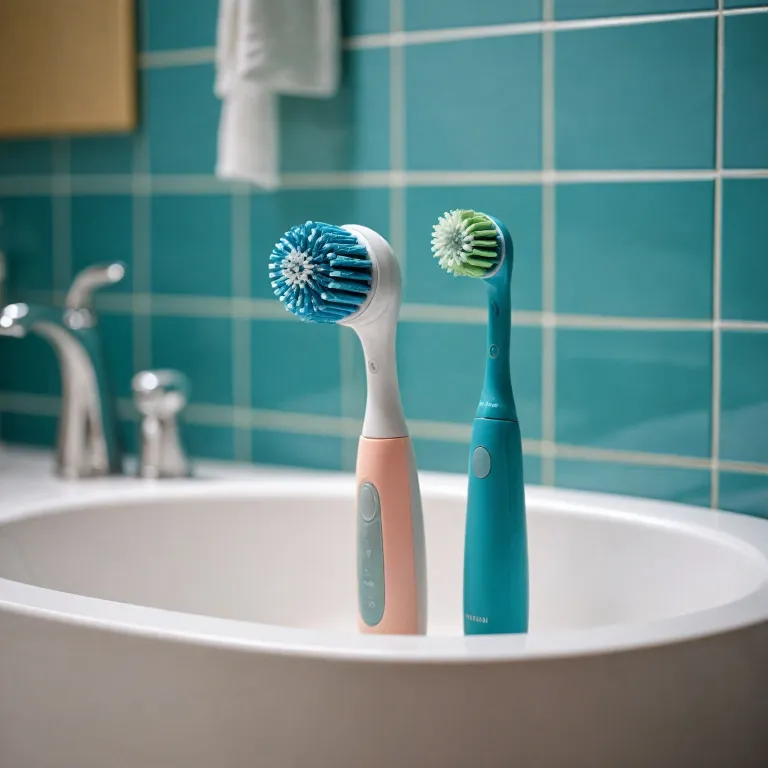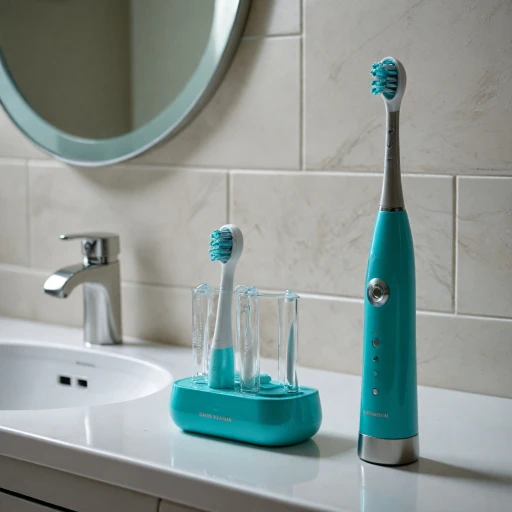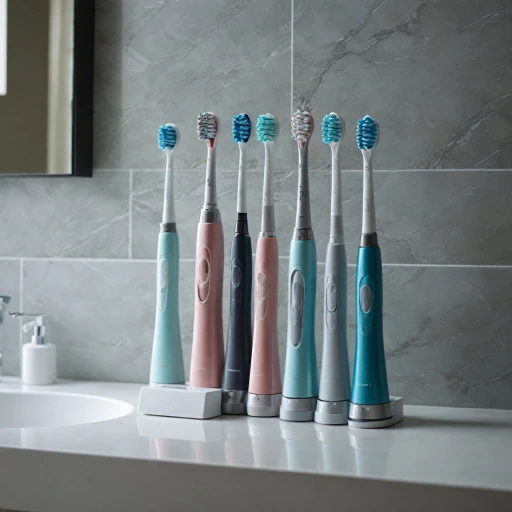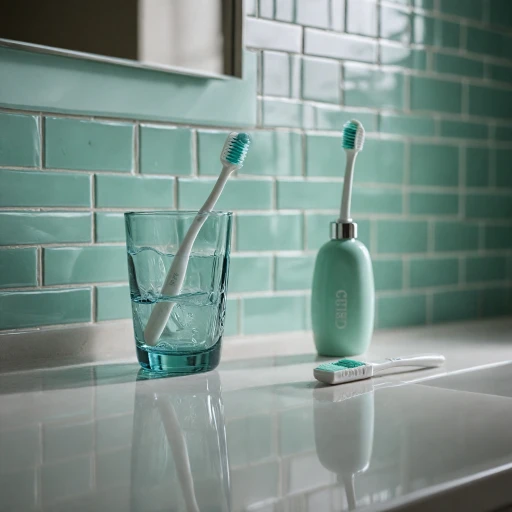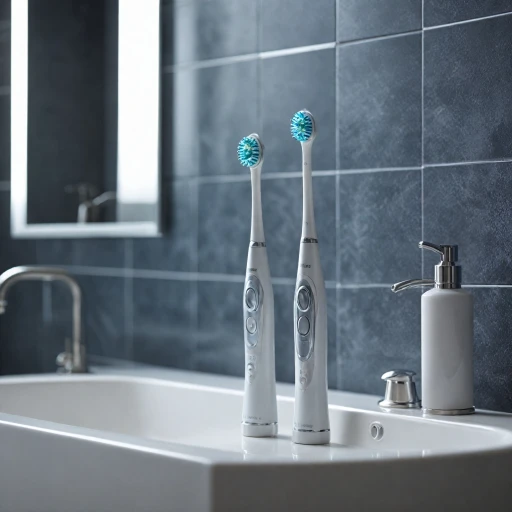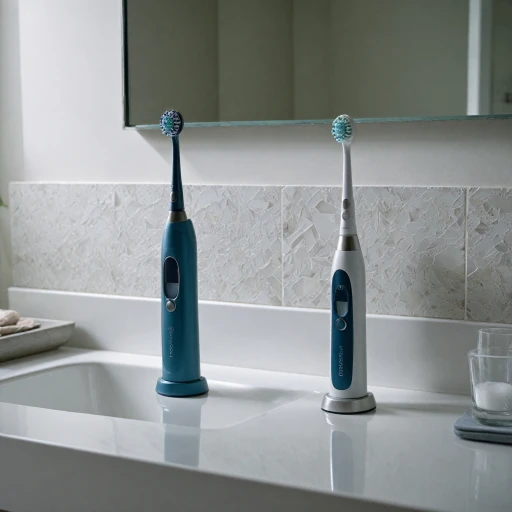
Understanding Rotating Toothbrush Technology
Delving into the Mechanics of Rotating Toothbrushes
Rotating toothbrushes have revolutionized the way we approach oral hygiene. Unlike manual toothbrushes, these electric toothbrushes employ a unique oscillating brush mechanism that enhances plaque removal and promotes better oral health. The rotating action is designed to mimic the professional cleaning tools used by dentists, providing a more thorough clean than regular manual brushing.
At the heart of this technology is the oscillating brush head, which moves in a circular motion to effectively dislodge plaque and debris from the teeth and gums. This motion is often combined with a pulsating action, which helps to further break down plaque and improve gum health. The high frequency of these movements ensures that even the most stubborn plaque is removed, contributing to a significant improvement in oral hygiene.
Many rotating toothbrushes also offer additional features such as different brushing modes, pressure sensors, and timers to help users optimize their brushing technique. These features not only enhance the brushing experience but also ensure that users are brushing for the recommended two minutes, which is crucial for maintaining oral health.
For those interested in exploring the benefits of specific models, the Oral-B Vitality Toothbrush is a popular choice that exemplifies the advantages of rotating toothbrush technology. Its affordability and effectiveness make it a standout product in the market.
Understanding the technology behind rotating toothbrushes is essential for making an informed decision when purchasing an electric toothbrush. As we delve into the advantages of using these products, it becomes clear why they are considered among the best options for achieving optimal oral care.
Advantages of Using a Rotating Toothbrush
The Power of Rotating Brush Heads
Rotating toothbrushes hold a key advantage in their ability to deliver a comprehensive clean. Unlike manual toothbrushes that rely on your arm's movement, these electric toothbrushes feature oscillating brush heads that move with high frequency vibrations to effectively target every crevice and surface of your teeth. This oscillating brush motion is designed to enhance plaque removal, minimizing the efforts required with manual brushing techniques.
Plaque Removal and Whitening Benefits
The combination of rotation and pulsation allows these toothbrushes to break up and sweep away plaque, contributing significantly to oral hygiene. Many users report a noticeable difference in how clean their teeth feel after using a rotating toothbrush, also attributing improvements in teeth whitening over time. These factors alone demonstrate the measurable benefit in maintaining optimal oral care and health with these products.
Ease of Use and Technological Edge
Rotating toothbrushes are engineered to be easy to use, often boasting ergonomic designs for a comfortable grip. They can include various brushing modes tailored to your needs, such as sensitive or gum care options, ensuring they cater specifically to individual oral health requirements. These technological features make rotating toothbrushes some of the best products for sustained oral health.
Value for Money Considerations
When it comes to pricing, the wide array of rotating toothbrushes available means there is a model to fit almost any budget. While advanced models may come at a higher price sale, regular price or sale price offers make these oral care tools accessible to many. Moreover, investing in a quality rotating toothbrush can often lead to long-term savings by reducing the need for frequent dental cleanings.
Comparing Sonic and Rotating Technologies
Although sonic toothbrushes provide an alternative with their high-speed frequency vibrations, the rotating brush remains a preferred choice for many due to its proven efficacy in plaque removal and overall oral hygiene. For those interested in exploring specific product features and benefits of rotating toothbrush brands, consider diving into detailed product comparisons.
Choosing the Right Rotating Toothbrush
Finding the Ideal Rotating Toothbrush for You
When it comes to choosing the right rotating toothbrush, there are several factors to consider in order to ensure optimal oral hygiene and plaque removal. With a variety of products available on the market, including sonic and oscillating brush options, understanding your personal needs can help narrow down the choice.
Price is often a key consideration. Electric toothbrushes vary widely in price, so deciding on a budget can help in selecting the best option within that range. Often, more advanced models with features like teeth whitening, multiple brush head options, and specialized cleaning modes cost more. However, there are also great price sale occasions where you can find quality toothbrushes at a sale price.
A crucial aspect to consider is the technology. While some might prefer sonic toothbrushes that use high frequency vibrations to clean, others might find a rotating toothbrush more effective for plaque removal and achieving a superior clean. In this case, you may want to explore how these rotating brushes can significantly optimize your brushing routine, as they offer a distinct benefit over manual brushing.
Functionality and ease of use also play an integral role in selection. Some electric toothbrush models provide features such as a built-in timer, pressure sensors, and different brushing modes. These can enhance your oral care routine, ensuring that you brush for the recommended amount of time and apply the right pressure.
Lastly, for those who travel frequently, considering a toothbrush with a sturdy travel case might be beneficial. Ensuring you have the right tools for maintaining your oral health routine on the go is essential.
Finding the right product is essential to achieving a cleaner mouth and brighter teeth. You may want to look further into spinbrush models, as discussed here, to gain deeper insights into their benefits.
Proper Technique for Using a Rotating Toothbrush
Mastering the Different Techniques for Rotating Brushes
When it comes to using a rotating toothbrush effectively, understanding proper brushing techniques can significantly enhance your oral hygiene routine. While the technology of rotating brushes does much of the work for you, adopting the correct technique ensures optimal plaque removal and teeth whitening. Here’s how to make the most of your electric brush.Positioning and Timing
- Positioning the Brush Head: Start by holding the toothbrush rotating head at a 45-degree angle against your gum line. Ensure the bristles are in gentle contact with your teeth and gums.
- Systematic Coverage: Divide your mouth into four quadrants and spend at least 30 seconds on each. This ensures comprehensive coverage, leaving no area neglected in the cleaning process.
- Using Moderate Pressure: Let the electric toothbrush do the work. Applying too much pressure can damage both your gums and the brush head. The oscillating brush movement is designed to dislodge plaque efficiently without excessive force.
Brushing Technique
- Choose the Right Frequency: Sonic toothbrushes operate at a high frequency of vibrations, optimizing plaque removal. Ensure you understand your brush's settings to utilize the best one for your needs.
- Follow the Natural Curve: As you glide the electric toothbrush along your teeth, ensure it follows the natural curvature, focusing on the areas where plaque tends to accumulate the most, such as the back teeth.
- Don’t Forget the Tongue: For a fresher breath and comprehensive oral hygiene, gently clean your tongue using the brush head.
Regular Care and Maintenance
Regular upkeep of your rotating toothbrush is crucial not only for hygiene but also for maintaining the device’s efficacy. Clean your brush head after each use and replace it every three months or as recommended by the manufacturer. Also, keep an eye on product sales for potential upgrades to your oral care toolkit. By investing time in mastering these techniques, you’ll maximize the benefits of your electric toothbrush, leading to a cleaner, healthier mouth and potentially reduced visits to the dentist.Common Misconceptions About Rotating Toothbrushes
Dispelling Myths Surrounding Rotating Toothbrushes
When it comes to electric toothbrushes, rotating models often find themselves in the spotlight. However, several common misconceptions can cloud judgment when selecting the best oral care product. Let's clear the air on a few unwarranted myths. Firstly, the notion that rotating toothbrushes are a universal solution for everyone is not completely accurate. While they offer many benefits like effective plaque removal and aiding in teeth whitening, individual oral hygiene needs can differ significantly. For some, sonic toothbrushes or other types of electric toothbrushes might be preferable based on personal comfort and specific oral health requirements. Another misunderstanding relates to the noise level associated with rotating toothbrushes. Although some believe these products are noisy due to their oscillating brush heads, modern designs prioritize quiet operation, making the brushing process pleasant even in environments where silence is valued, such as shared living spaces. Price concerns are also a common topic. People often assume that the regular price of a high-quality rotating toothbrush is prohibitive compared to manual toothbrushes. However, with constant evolvement in electric toothbrushes and frequent product sales, affordable options are frequently available without compromising on oral health benefits. Moreover, many individuals have a mistaken belief that the maintenance of rotating toothbrushes is cumbersome. On the contrary, their design ensures that changing the brush head is a straightforward task, enhancing the convenience factor. Regular cleaning and proper storage, perhaps with a travel case, prolongs the toothbrush's lifespan, ensuring continuous top-tier cleaning performance. Finally, there's skepticism about the effectiveness of rotating toothbrushes for every type of brushing need. While manual brushing techniques can be effective, the high frequency and oscillating brush motion of electric toothbrushes often offer a superior clean, especially when aiming for lasting oral health benefits. In essence, while rotating toothbrushes offer impressive capabilities for your oral care routine, it's essential to weigh these factors according to your unique needs to make an informed decision.Maintaining Your Rotating Toothbrush
Keeping Your Rotating Toothbrush in Top Condition
Maintaining your electric toothbrush is essential to ensure optimal performance and longevity. A well-maintained sonic toothbrush helps in providing thorough plaque removal and preserving your oral hygiene. Follow these simple yet effective tips to keep your rotating toothbrush in pristine condition.- Regularly Replace the Brush Head: Just like manual toothbrushes, electric toothbrush heads wear out over time. For the best oral care, replace the brush head every three months or sooner if bristles appear frayed. This practice ensures effective brushing, maximizing teeth whitening and plaque removal.
- Clean and Dry After Use: After each brushing session, rinse the brush head under running water to remove toothpaste and debris. Don’t forget to gently wipe down the handle and connections. Let it air-dry completely in an upright position to avoid bacterial buildup in the brush head.
- Proper Storage: To maintain hygiene, store your toothbrush in a dry and well-ventilated space. Avoid keeping it inside a closed container for extended periods unless using a travel case for transport. This prevents moisture accumulation that can lead to mold growth.
- Charging Wisely: Overcharging can degrade battery health in electric toothbrushes. Most models don’t require daily charging; hence, refer to the product manual for specific guidance. Modern toothbrushes often come with long-lasting batteries and should last multiple brushes per charge.
- Handle With Care: Treat your toothbrush with care to avoid unwanted damage. Avoid dropping it or submerging it in water entirely, as this could harm its functionality. An oscillating brush offers powerful brushing without the need for heavy-handed manual brushing techniques.
